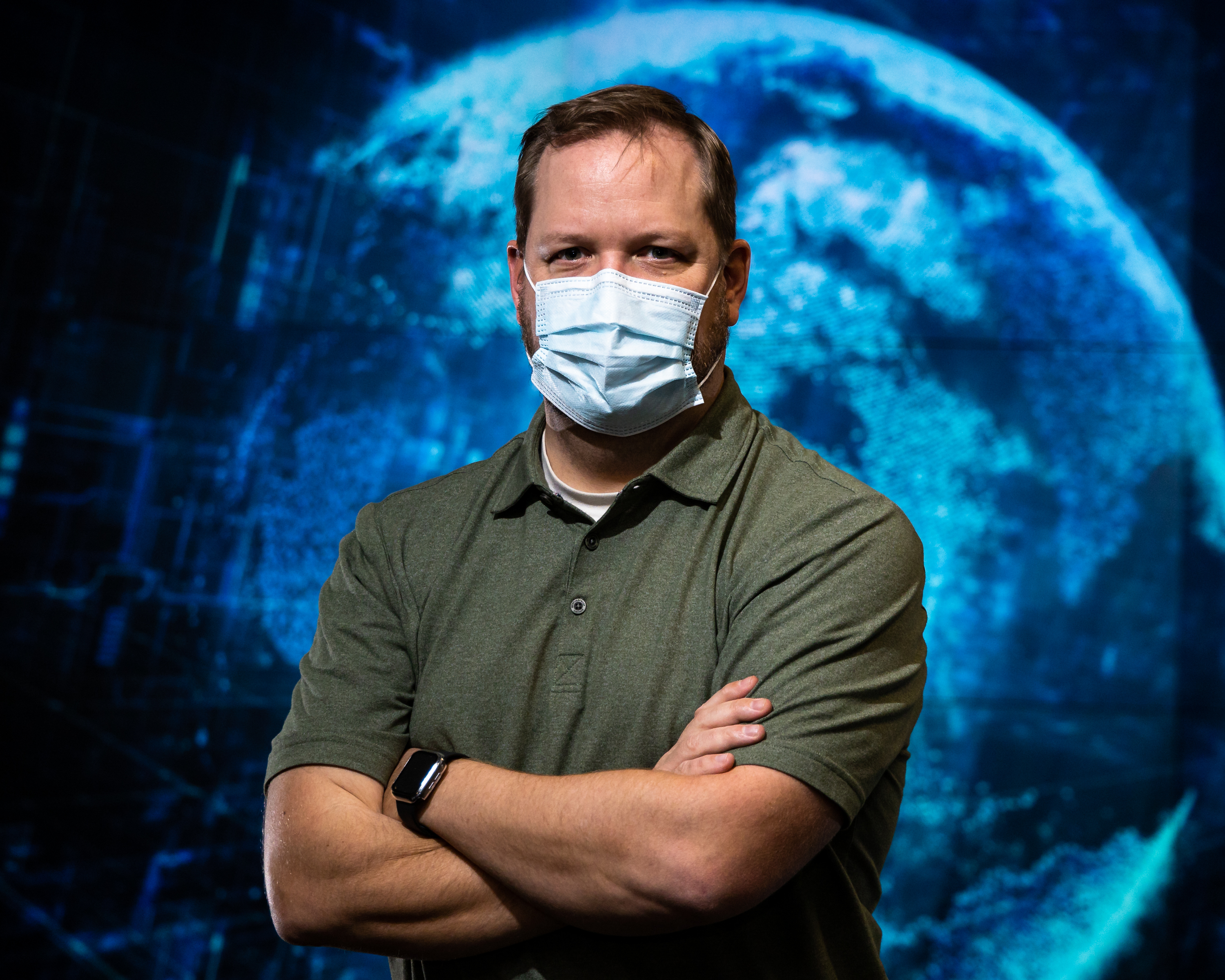Cory Stuart of Oak Ridge National Laboratory applies his expertise as a systems engineer to ensure the secure and timely transfer of millions of measurements of Earth's atmosphere, fueling science around the world.
As the head of data systems and cybersecurity for the Department of Energy's Atmospheric Radiation Measurement, or ARM, user facility, Stuart manages a multi-laboratory team and an extensive network of virtual and physical servers, routers and encryption technologies across multiple sites from Oklahoma to the Azores, an archipelago west of Portugal.
Suites of instruments at ARM sites continuously measure meteorological variables such as sunlight, precipitation, clouds, particles and trace gases in the air - with some measurements taken as frequently as every 10 seconds. Capturing these volumes of data and ensuring their integrity and availability entails quite a bit of computational infrastructure and know-how.
Stuart enjoys the challenge and stays motivated knowing that "the impact is not just in making a system work but enabling people to do the world-class science that they do."
With the ARM Data Center at ORNL hosting about 1.8 petabytes, or about 1,800 times a standard laptop's capacity, Stuart is no stranger to managing big data. He has worked with ARM in various positions of increasing responsibility for more than a decade.
In that time, Stuart has managed data streams flowing from a variety of sites, including China, Africa and the Amazon, as well as the flagship site in the southern Great Plains that encompasses more than 20 facilities sprawled across two states. He and his team handle data from aerial and shipboard campaigns, too. Stuart even created "a data center in a can" for the recently concluded MOSAiC expedition, a yearlong installation on an Arctic ice floe at the North Pole.
Each of the ARM sites presents different opportunities and challenges. Stuart cites local bandwidth limitations and appropriate frequencies for international use as items he examines when setting up new data collection systems. He is looking forward to the widespread availability of 5G to facilitate real-time data delivery in more locations.
Love at first click
Stuart's love of computers started in high school with a programming class and what he describes as a "pretty awful" Commodore 64 home computer. The class just clicked for him, prompting Stuart to focus his undergraduate studies at Lewis University on computer science.
He worked in the IT department at Argonne National Laboratory while he completed his master's degree in computer information and network security. Except for a short stint working for a bank, Stuart has been part of the national laboratory system ever since. During his time at Argonne, a colleague invited him to work on parts of the site data system for ARM. When that colleague retired, Stuart stepped in to become the ARM site data systems manager.
When the opportunity came in 2018 to continue his work for ARM from ORNL, Stuart was enthusiastic. As a history buff, he finds ORNL's origin in the Manhattan Project fascinating. But it was the laboratory's expansive science portfolio, including work in cyber and national security, that really drew him.
"To be able to come to the biggest lab, and an incredibly diverse lab, was really attractive to me," Stuart said.
Coming to ORNL has enabled Stuart to expand his support of ARM, including leading the ARM Data Center systems administration team. He has also appreciated the move for personal reasons. An outdoor and sports enthusiast, he enjoys the more temperate winters, the nearby Great Smoky Mountains and the many lakes filled with bass. He spends leisure time trying to top his biggest catch of a seven and three-quarter pounder and coaching his children's baseball and basketball teams.
In the coming year, Stuart looks forward to setting up data streams for additional sites in the mountains of Colorado and near Galveston Bay in Texas.
"New sites mean new challenges, new data, and ultimately, new science," Stuart said. "That keeps things exciting for me."







